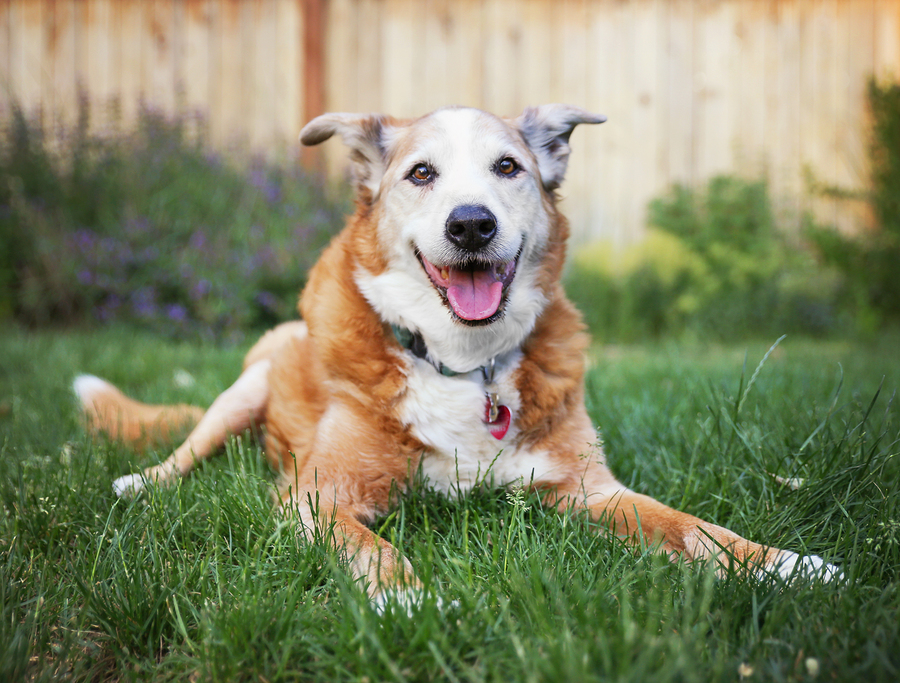Cancer in Canines

Cancer is a debilitating disease affecting millions of Americans daily. The same is true for animals, as approximately 50 percent of all dogs over the age of 10 will be diagnosed with some form of cancer. Being aware of the possibility of cancer in your canine and having your veterinarian perform regular checkups can help to ensure that you are doing the best for your dog.
According to Dr. Heather Wilson, assistant professor in oncology at the Texas A&M College of Veterinary Medicine & Biomedical Sciences (CVM), the most common types of cancer in dogs is lymphoma (tumor of the lymph nodes), osteosarcoma (tumor of the bones), and mast cell tumors (skin tumor).
“Lymphoma most commonly affects the lymph nodes, but can also affect other parts of the body such as the liver, spleen, bone marrow, gastrointestinal tract, and the central nervous system,” explains Wilson. “This disease is generally not curable, but is very treatable with chemotherapy.”
“Osteosarcoma is a bone tumor that affects the limbs of large and giant breed dogs most often,” says Wilson. “These tumors are again generally not curable, but can be treated with amputation of the affected limb and chemotherapy does increase survival. However, most dogs will eventually succumb to the disease if it spreads to the lungs.”
Mast cell tumors commonly occur on the skin and they are the most common type of malignant skin tumors in dogs. Most of these tumors are removed and cured with surgery. However, some are very aggressive and are so likely to spread that chemotherapy must be integrated into the treatment protocol after surgery. Other tumors may require radiation therapy if they are not completely removed during surgery.
“Any dog can get cancer, but certain breeds such as the Golden Retrievers, Boxers, German shepherds, Rottweilers, and Bernese Mountain dogs are predisposed to many forms of cancer,” notes Wilson.
As cancer is so common in dogs, annual geriatric exams with a veterinarian are strongly encouraged. After a cancer diagnosis and treatment, Wilson recommends monitoring the pet for recurrence every two to six months for three years. The frequency of the checkups depends on the type of tumor.
It is important to regularly perform at-home physical examinations on your pet. You should look for any lumps, specifically around the lymph nodes in the neck. However, not all tumors are visible; therefore, regular veterinary visits are crucial to guarantee your pet’s health.
While cancer can be extremely stressful for owners and dogs, the good news is that with the amount of resources and specialists that are now available to treat cancer in pets, owners now have the power to make educated and responsible decisions to get their companion animals through this illness. In recent decades, veterinary medicine has progressively advanced to offer technology and treatment of human quality for pets to help aid in cancer treatment and other illnesses.
The Diagnostic Imaging and Cancer Treatment Center (DICTC) at the CVM is one example of the new state of the art facilities now available for companion animals. The DICTC is set to open its doors in the next couple of months and it will greatly improve the quality of care animal patients receive due to the highly advanced capabilities of the new technology.
“The DICTC will house advanced imaging equipment that will help us find and monitor cancer at a much earlier stage than was previously possible,” explains Wilson. “The earlier we can identify cancer the better we can treat it. Additionally, the Tomotherapy unit will allow us to very precisely treat hard to reach tumors in animals that we were previously unable to treat because of their location, such as brain or lung tumors. Additionally, we can treat multiple sites in the same animal with relative ease allowing us to potentially treat dogs with radiation or multiple mast cell tumors when previously this was not possible.”
Cancer’s prevalent nature makes it an important topic to research and learn more about. However, cancer can be very complicated and hard to comprehend. To learn more about cancer in dogs and how to treat it, please visit the oncology section at the CVM website at vethospital.tamu.edu/small-animal/oncology/.
Pet Talk is a service of the College of Veterinary Medicine & Biomedical Sciences, Texas A&M University. Stories can be viewed on the Web at vetmed.tamu.edu/news/pet-talk. Suggestions for future topics may be directed to editor@cvm.tamu.edu.


